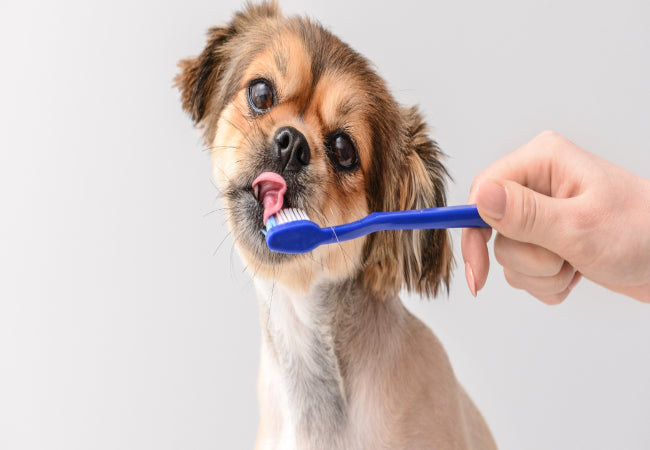Brush Your Dog’s Teeth 2025: Vet’s Guide to Dental Health at Home 🐶✨

In this article
Brush Your Dog’s Teeth 2025: Vet’s Guide to Dental Health at Home 🐶✨
By Dr. Duncan Houston BVSc
Dog breath isn’t supposed to smell like a sewer. Dental disease is one of the most common (and preventable) health problems in dogs—and brushing is the #1 way to fight it. I’m Dr. Duncan Houston, veterinarian and founder of Ask A Vet. Here’s a step-by-step guide to brushing your dog’s teeth, why it matters, and what to use for clean, healthy chompers.
🦷 Why Brushing Your Dog’s Teeth Matters
- 80% of dogs over age 3 have some form of dental disease
- Bad breath is often a sign of infection, not “normal” dog smell
- Bacteria from the mouth can affect the heart, kidneys, and liver
🪥 What You’ll Need
- Dog-safe toothpaste (never human toothpaste—xylitol is toxic!)
- Dog toothbrush or finger brush
- Treats and patience
- Towel or non-slip mat (optional for small dogs)
✅ Step-by-Step Guide
Step 1: Choose a Calm Time
- After a walk or play session is ideal
Step 2: Let Them Taste the Toothpaste
- Start by letting your dog lick it off your finger or the brush
- Use chicken, beef, or peanut butter flavored toothpaste made for dogs
Step 3: Practice Handling the Mouth
- Gently lift the lips, touch the gums, and reward with praise or treats
Step 4: Start Brushing in Small Circles
- Focus on the outer surfaces of the back teeth first—this is where tartar builds fastest
- Brush for 30–60 seconds per side
Step 5: Build the Routine
- Even brushing 2–3x per week makes a big difference
- Daily brushing is the gold standard, but consistency is key
🚫 Common Mistakes to Avoid
- Using human toothpaste (xylitol = toxic)
- Using hard brushes that irritate gums
- Starting too fast—build trust first
- Skipping vet dental cleanings entirely
🧼 Signs Your Dog Has Dental Disease
- Bad breath
- Yellow or brown teeth
- Red, swollen, or bleeding gums
- Dropping food or chewing only on one side
- Pawing at the mouth or avoiding chew toys
🦴 Dental Products That Help
- Enzymatic toothpaste (Virbac C.E.T., Petsmile)
- VOHC-approved dental chews (Greenies, Oravet)
- Water additives and dental sprays (secondary support)
🔗 Helpful Tools from Ask A Vet
- Dual Pocket Dispenser – Carry dental treats and wipes on the go
- Ask A Vet – Log dental routines, get toothpaste recommendations, and chat with a vet if you notice gum changes
📋 Summary Excerpt
Brushing your dog’s teeth is easier than you think—and more important than you realize. A vet explains exactly how to do it and why it matters.
❓ FAQs
-
Q: How often should I brush my dog’s teeth?
A: Ideally daily. But 2–3 times per week still makes a difference. -
Q: Can dental chews replace brushing?
A: No. They help, but brushing is the gold standard. -
Q: Is bad breath normal in dogs?
A: No. Bad breath usually means dental disease, especially if persistent.






